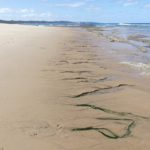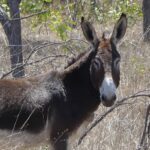One method of disinfecting water from biological hazards is utilizing UV rays from the sun, known as SODIS (Solar Disinfection). The principle of water disinfection by solar radiation was first discovered in 1984 by Prof. Aftim Acra of the American University in Beirut. In the 1990s, it was further developed by the Swiss Federal Institute of Aquatic Sciences and Technology (Eawag). The method is widely proposed in developing countries to people living in slums and rural areas with limited access to clean and safe drinking water. SODIS is the ideal technology for converting biologically contaminated but clear raw water into safe drinking water on a small scale.
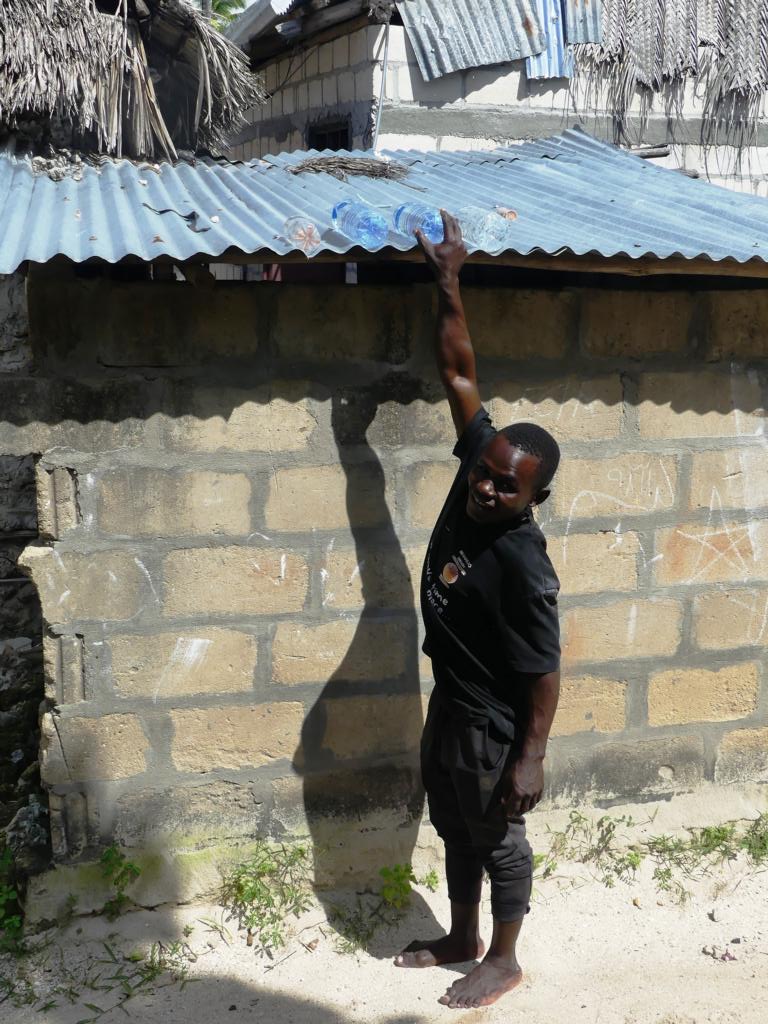
The method works by filling cleaned and clear PET bottles with water and position them directly into the sun. After a particular time, UV-A rays and the increase in temperature kill most of the germs in the water, and the water can be drunk safely.
The effect of UV rays and temperature.
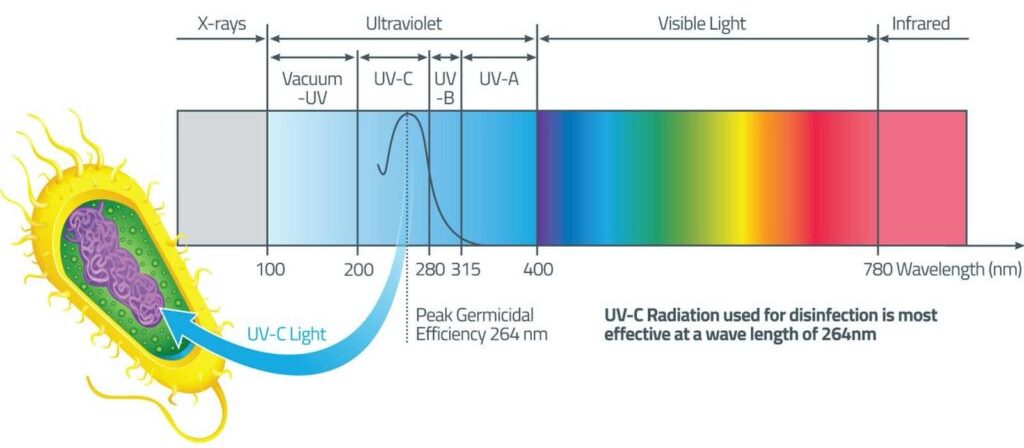
Sunlight disinfects water through two effects: radiation in the UV spectrum and increased water temperature. Germicidal efficiency is highest within the UV-C spectrum, but only UV-B and UV-A rays are essential under natural conditions on Earth. UV rays effectively kill pathogens by penetrating their cells and causing severe damage to the genetic material by breaking the DNA double-strand. This prevents their reproduction and propagation.
In addition to UV-A rays, the increased water temperature caused by direct sunlight above 50 degrees C (122 degrees F) will significantly improve the sterilization effect.
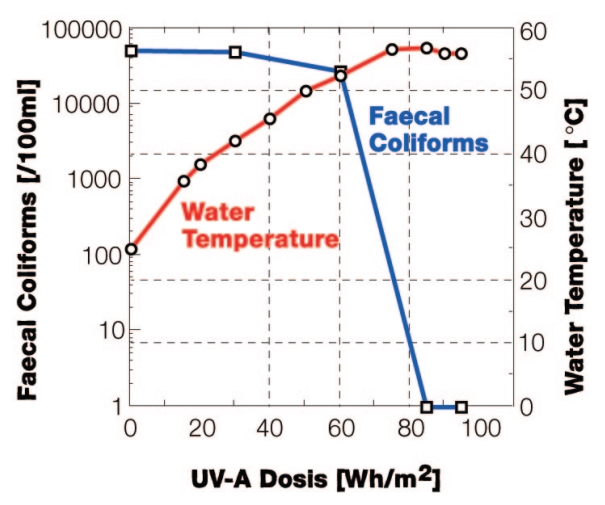
Which containers are best for SODIS water disinfection?
Clear glass containers, transparent PET bottles, or similar materials holding less than 3 liters of content are all needed. These containers must allow the sun’s UV light to pass through. Furthermore, all labels must be removed. Ensuring that the plastic containers are not made from PVC is also essential. Recycled glass also consists partly of window glass scraps, which are unsuitable for SODIS, as window glass does not allow UV radiation to pass through.
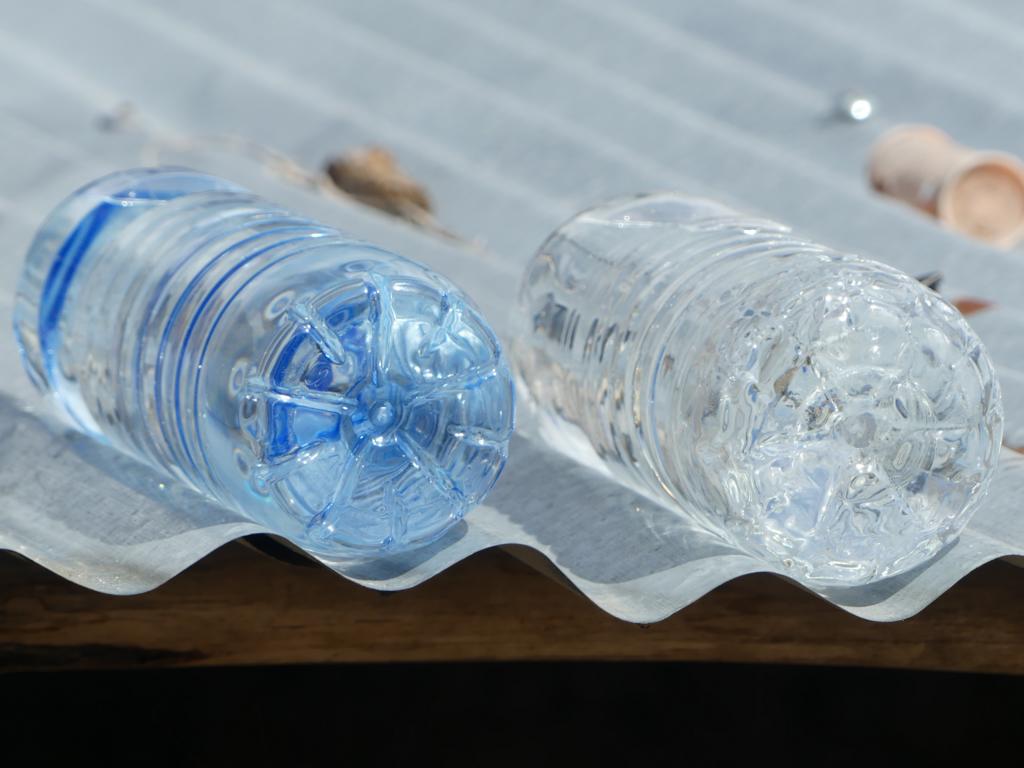
The best-suited containers are made from PET plastic, typically used as drinking bottles, and can now be found on every roadside ditch or beach. It is no problem if they have a light blue tinge. Sometimes, people are concerned that substances in PET bottles could cause cancer under increased temperature and radiation levels. Various research institutions tested relevant substances in PET bottles. In this regard, studies have been done for the following substances: antimony (catalyst in PET production), adipates & phthalates (not used in PET production, only in PVC), acetaldehydes & formaldehyde (concentration remains far below state regulatory limits). These studies show that when the SODIS method is applied correctly with PET bottles, there is no danger to human health.
Transparent drinking water bladders – contained in Hydration packs – can also be used. The material often used for this does shield some light from the UV spectrum, but the flat design means that the permeability is usually sufficient for safe water disinfection.
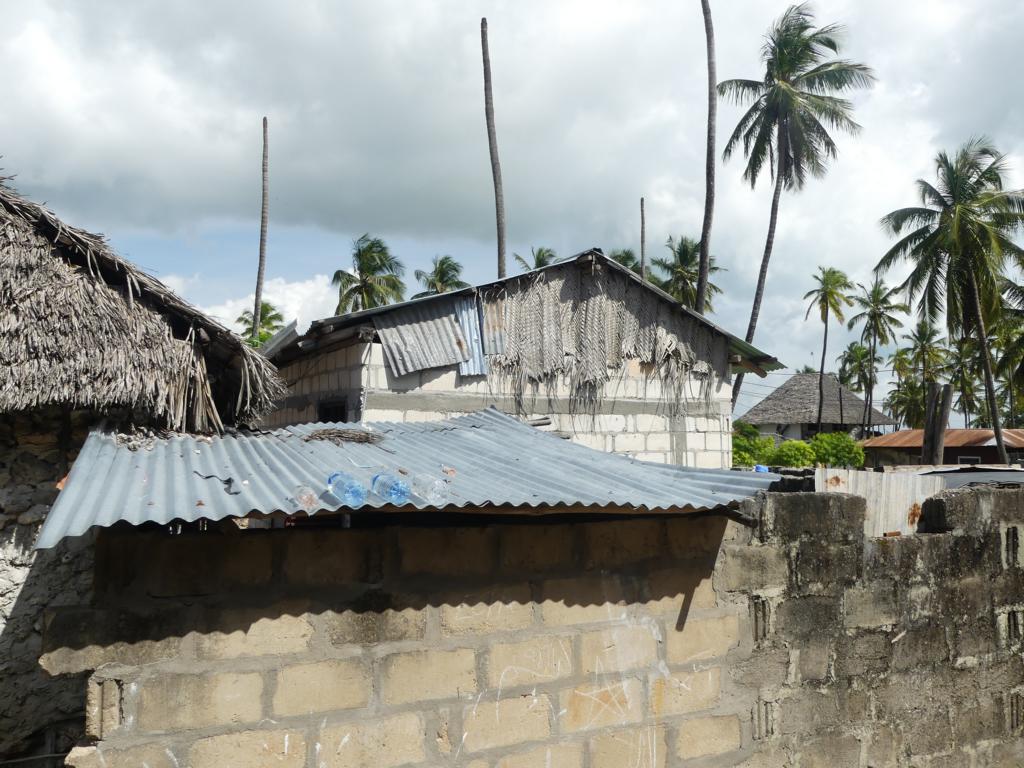
When placing the filled bottles into the sun, it is ideal to position them on metallic material, which stores heat and reflects additional sunbeams into the bottle. In practice, most Africans put the filled water bottles on their corrugated iron roofs, with the additional benefit that the bottles cannot roll off.
Input water requirements
When filling a clear PET bottle with raw water, it must be free of as much suspended matter as possible. Otherwise, individual pathogens in the water may hide in the shade from UV light. Suspended particles can be removed by sedimentation, decanting, or filtration.

An intense coloration or cloudiness of the water will also prevent complete disinfection. In such cases, carbon filtration must reduce compounds beyond a slight coloration. The raw water should have a cloudyness below 30 NTU (Nephelometric Turbidity Unit). To find this limit, the PET bottle filled with 1.5 liters (0.4 US liquid gallon) should be placed on top of a newspaper headline. Now, if one looks at the bottom of the bottle from the neck through the water column, the letters of the headline should still be readable. If this is the case, the water can be used.
Required exposure time
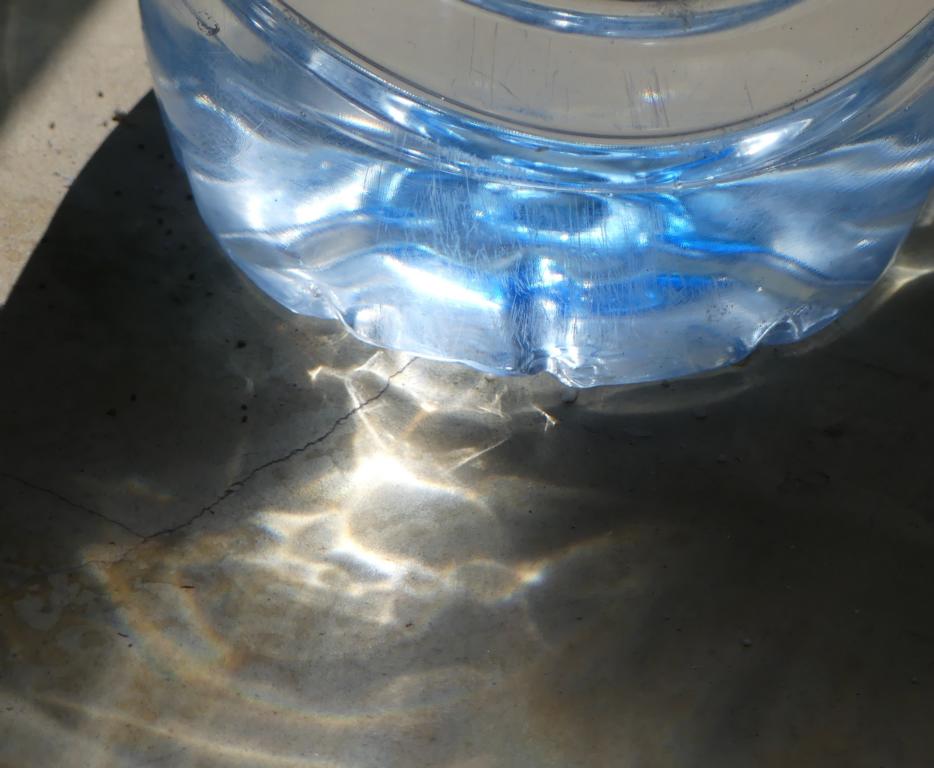
The amount of UV rays available per time unit for disinfection depends on the intensity of sunshine. Therefore, the required exposure time for clear skies and various degrees of overcast skies varies. It is standard practice to assume an exposure time of:
- Six hours under bright or up to 50% cloudy sky and
- Two consecutive days under 100% cloudy sky.
- SODIS does not perform satisfactorily during days of continuous rainfall. Water boiling or rainwater harvesting is recommended during these days.
Effectiveness against bacteria, viruses, and parasites
If applied correctly, the SODIS method can substantially reduce the pathogen concentrations of bacteria and certain types of viruses. Bacteria are highly sensitive to UV-A radiation and are quickly killed by sunlight. The inactivation rate for bacteria in real-field applications of SODIS is comparable to chlorination and ceramic filtration. Viruses are slightly more resistant but are also killed within the recommended 6 hours. Parasites are less sensitive to sunlight, and substantial inactivation of most parasites can only be expected under high irradiation doses, which means full sunshine and extended exposure times.
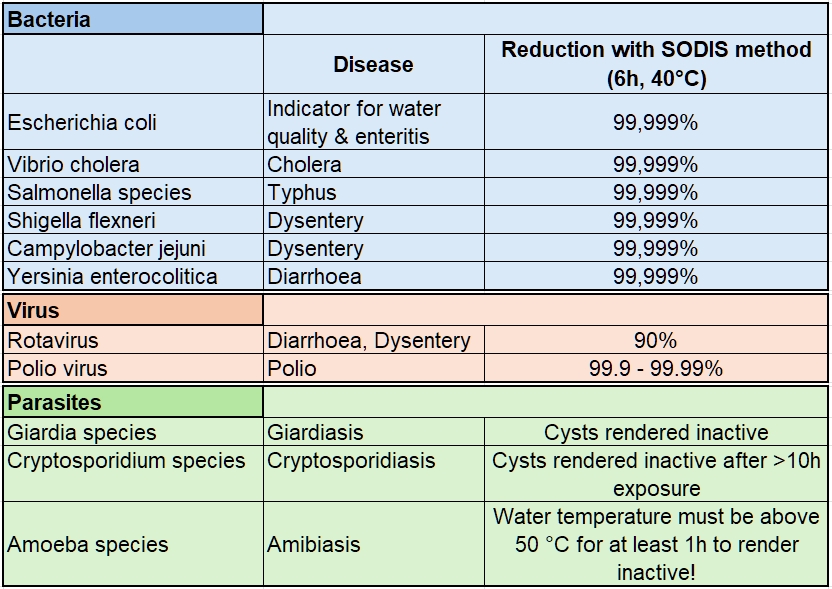
The above table summarizes the most essential disinfection results on bacteria, viruses, and parasites. A complete summary of the inactivation of all tested bacteria, viruses, and protozoa species can be found in the SODIS manual on pages 14-16.
It is also essential to know that SODIS does not entirely sterilize the water. Many non-pathogenic microorganisms and algae are unaffected by solar radiation and survive the SODIS treatment.
Effect against Bilharzia parasites
Bilharzia is caused by the larvae of Schistosoma parasites, which are transmitted through contact with contaminated water. These parasites can be found in many stagnant water sources, like ponds and lakes, in Sub-Saharan Africa and South America.
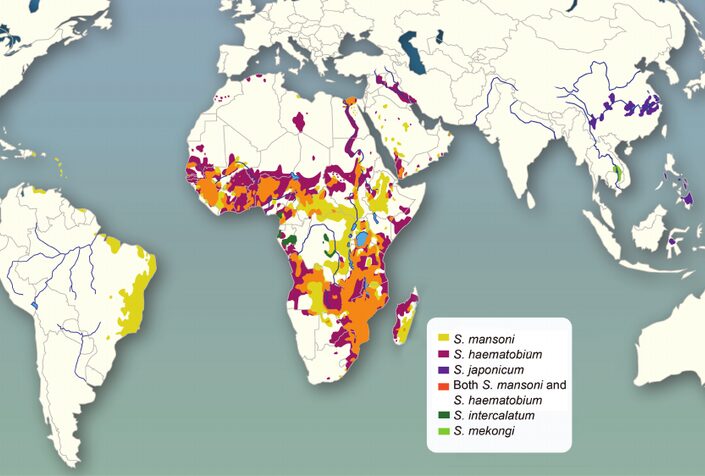
UV radiation from sunlight is limited in its effectiveness on the eggs of Schistosoma parasites, which are resilient in water. The SODIS method does not kill the eggs that cause the disease entirely. The free-swimming larvae that cause infection can also resist UV light. The level of UV exposure needed to kill Schistosoma larvae will not be achieved in the typical SODIS process unless the water is exposed to sunlight for double the standard exposure time or is placed in clear, shallow containers.
Therefore, SODIS is not guaranteed to eliminate Schistosoma larvae or eggs from water. It is recommended that it not be used to treat Bilharzia-contaminated water sources. Either filtration or boiling will provide more reliable results in removing these parasites.
Lessons learned with water disinfection by natural UV rays:
- It is scientifically proven that UV-A rays can disinfect micro-biologically contaminated water in water bottles.
- Common, clear-colored PET water bottles are best suited.
- Suspended matter has to be removed from cloudy water before treatment.
- Positioning the filled water bottles in sunshine for 6 hours will kill all bacteria and most viruses.
- To remove most protozoans, increasing treatment time and intensity is necessary.
- This method cannot securely treat water contamination with eggs and larvae of Bilharzia species.
Further readings about Water Disinfection on this website:
Disinfecting water with Potassium Permanganate
.




